Food Chain Relationships-DRAFT ONLY
Learning Objectives
Understand the predator prey relationship
Be able to identify an example of predator/prey relationship
Understand the parasite/ host relationship
Be able to identify an example of parasite/host relationship.
Hi!
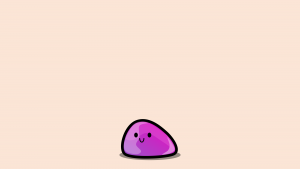
So, I’m a blob (Figure 1). A very cute blob. My life is pretty simple. I mostly just sleep around, I eat grass, and hang out with my blob buddies.
My life is perfect. Well, almost.
See, I’m Prey. That means that things like Black Blobs eat cute little’ol me. Animals that eat other animals are called predators. And animals that get eaten by predators are called prey (Figure 2).
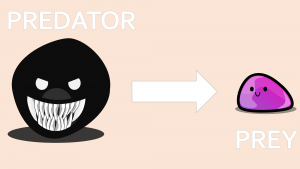
You could say that for predators, I’m food.
But we don’t talk about that.
Lucky for me, I got a little someone to help me out.
Check it out! This is a yellow Blob. With this little guy, I’m too fast for the black blobs to get me!
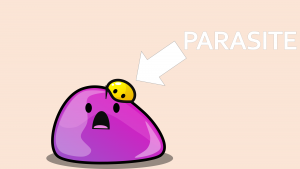
My friends don’t like it though. You see, yellow blobs are Parasites (Figure 3). That means they take energy from me to stay alive (Figure 4). They can’t survive on their own.
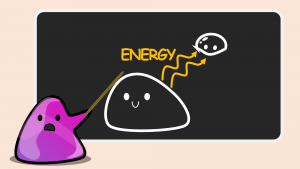
The animal a parasite is using for energy is called a host (Figure 5)! So I’m the host for this yellow parasite. My buddies say it’s dangerous, but they’re just jelly because I’m fast now.
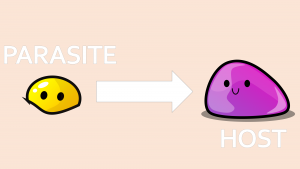
Besides, I’m fine (Figure 6).
See?
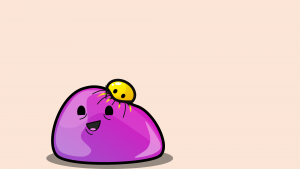
Now let’s do some review.
Predators are animals that eat other animals. The animals that predators eat are called Prey.
Parasites are living things that steal or borrow energy from another. The living thing losing the energy is called a host.
And that’s the predator/prey and parasite/host relationship!

